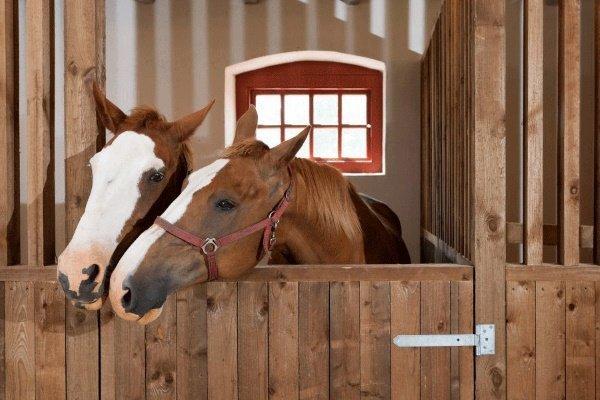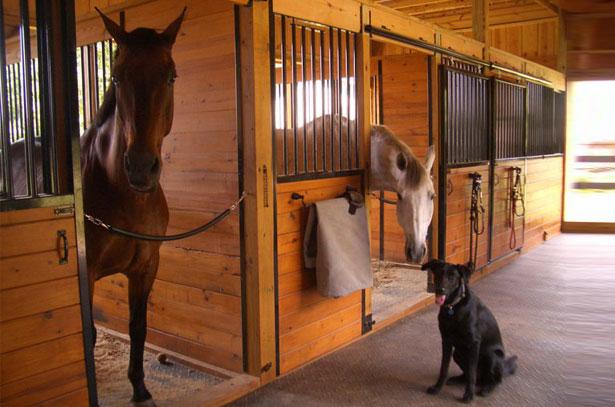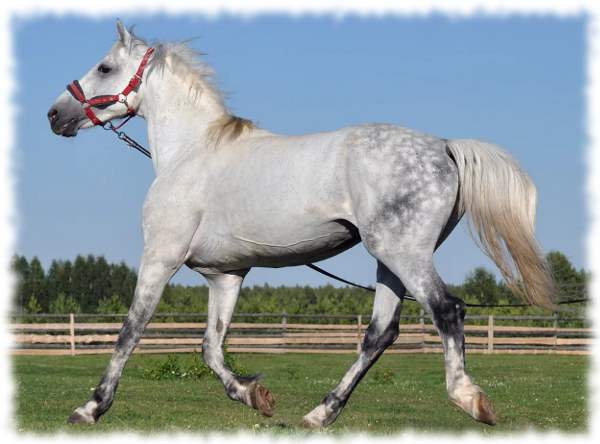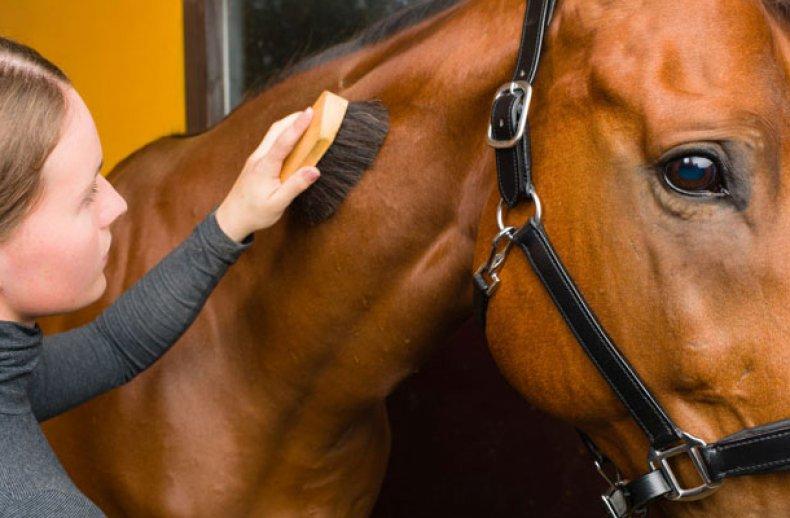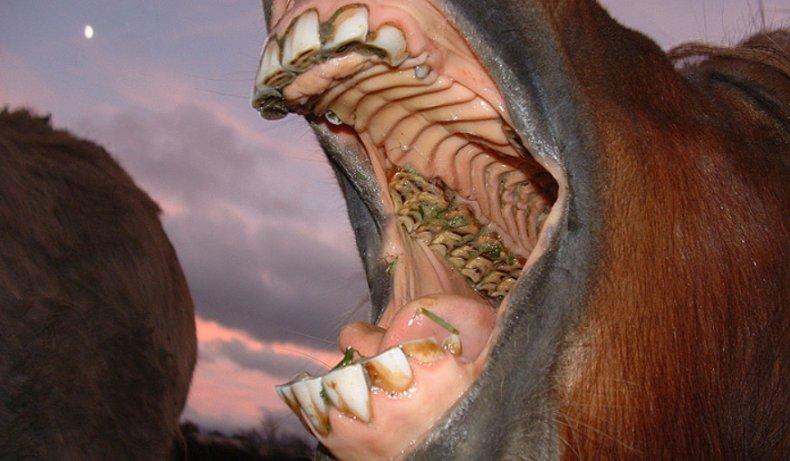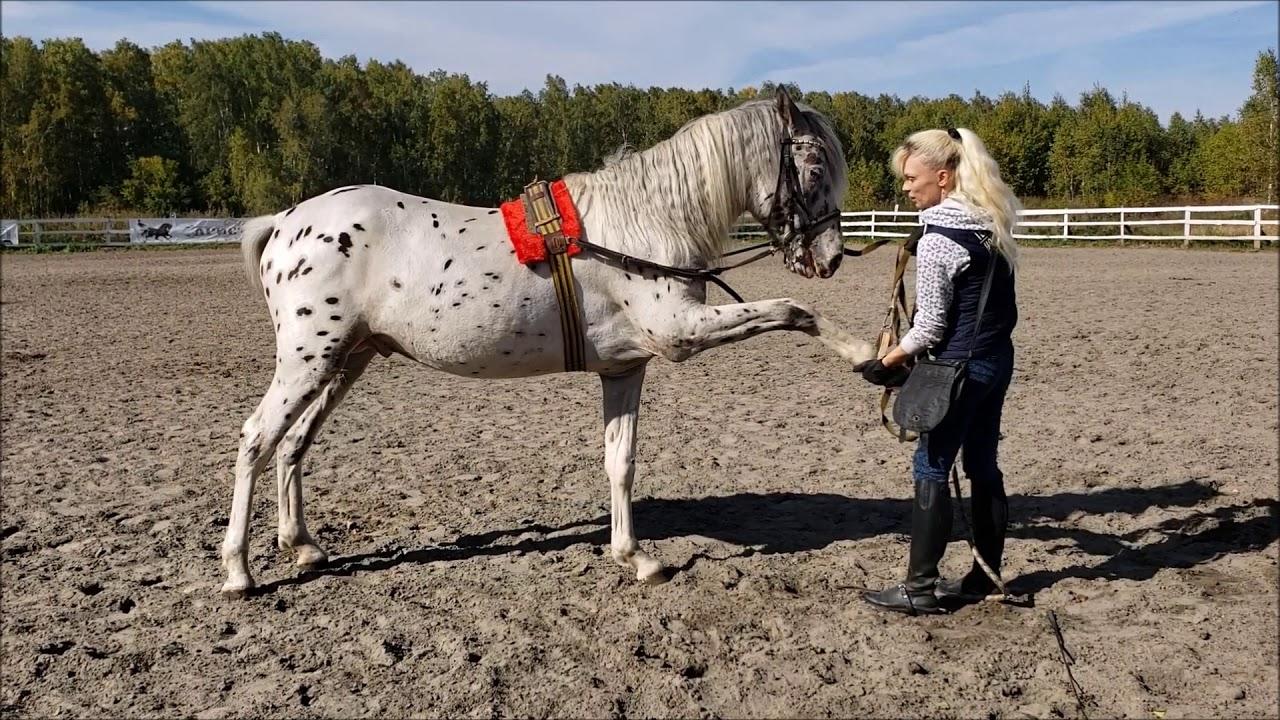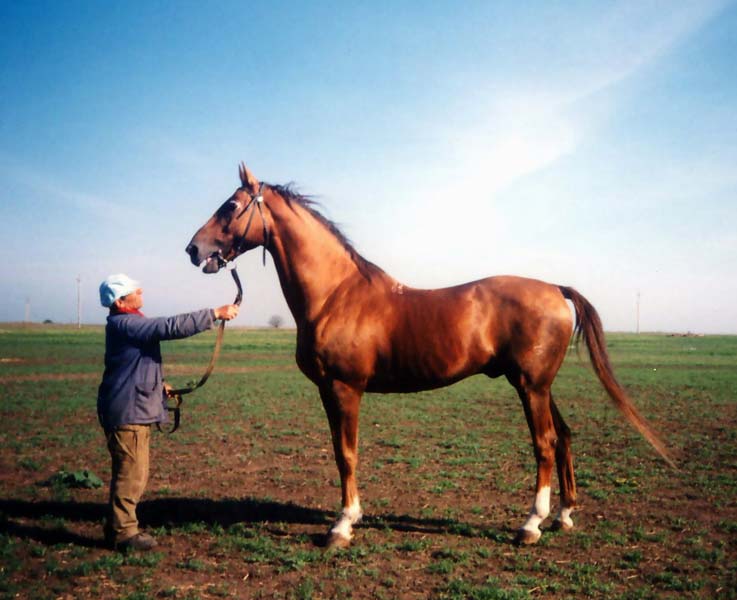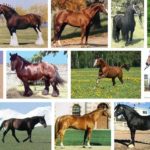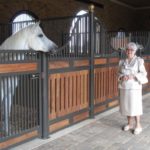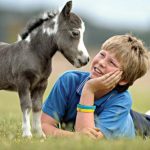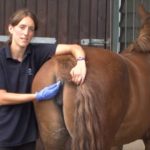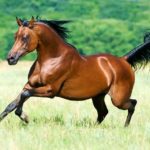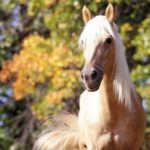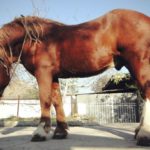Many people are interested in how to care for a horse. In order for an animal to grow and develop, it must be provided with optimal conditions. At the same time, it is necessary to follow the rules of hygiene, choose a balanced diet, and engage in disease prevention. Communication and training of the animal are of no small importance. Only an integrated approach will help you achieve success in keeping your pet.
- What you need to know before purchasing a horse
- Planned maintenance costs
- Basic rules for keeping animals
- Requirements for premises and maintenance of stables
- Choosing the best option for keeping a horse
- Feeding
- Basic diet
- Recommended Supplements
- Drinking regime
- Manure removal
- Care and hygiene
- Daily cleaning
- Haircut and care of mane and tail
- Cleaning the hooves
- How to take care of your teeth
- Bathing
- Communication and training
- Grazing and walking
- Observation by a veterinarian: vaccinations and veterinary treatments
- Features of winter keeping horses
What you need to know before purchasing a horse
Beginners are advised to consult a veterinarian before purchasing an animal. In this case, the doctor should definitely tell the purpose of purchasing the animal. You will have to carefully examine the pet in the stall and ask the seller about diseases or health problems. When purchasing, you need to ask the right questions. To ensure proper horse care, there are many features to consider.
You should definitely ask about the reason for the sale, the intensity of training, and the availability of vaccinations. Bad habits, ease of cutting, cleaning and other care procedures are of no small importance.
Planned maintenance costs
Owning a horse involves significant costs. Beginning horse breeders should familiarize themselves with the costs of feed:
- Oats - 90 kilograms of product will cost 500 rubles.
- Bran - a bag can be bought for 400 rubles.
- Hay - 350 kilograms of product costs 350 rubles.
- Vitamin supplement will cost approximately 1,500 rubles.
- Straw - will cost about 3,000 rubles.
According to rough estimates, keeping 1 horse in a stable will cost 10-11 thousand rubles. This amount does not include veterinarian services, medications, and vaccinations.
Basic rules for keeping animals
In order for the animal to develop normally and not get sick, it is worth studying the instructions for keeping it in a private home.
Requirements for premises and maintenance of stables
As a rule, it is recommended to keep horses indoors in winter and outside in summer. For this purpose, barns and stables are used.The barn is a warm and dry room that is suitable for 1-2 animals. It is quite possible to build it at the dacha. Stables are needed to house large numbers of animals.
A stall must be made in the stable, which is intended for cleaning, feeding and resting the pet. Also, stalls may be provided in the premises. They are compartments for the permanent residence of horses. For racing breeds, the minimum size should be 3.6 x 3.6 meters. Mares with foals require more open spaces.
Walls in stalls must be made of durable materials. Their height should reach 1.5 meters. This allows the animals to see each other. Also, this option for organizing the room will provide adequate ventilation and a sufficient level of illumination. Doors must be sliding or hinged. Their width should be 1.2 meters. You should definitely use latches. The width of passages in the stable must be at least 3 meters.
It is recommended to make concrete floors. They can also be made of paving stones or stone. In the absence of drains, it is worth providing your pet with careful care. This will help avoid the ammonia smell. Hard floors are easier to disinfect, but they are hard on your feet. To prevent increased loads, rubber mats are placed under the litter. It is recommended to make bedding from straw, wood pellets or coniferous tree shavings, which are free of dust and mold.
Ceilings must be at least 2.5 meters. This will allow the animals to raise their heads normally. Wires should be protected from rodents. It is important to provide windows for daylight. They will also provide natural ventilation.
Choosing the best option for keeping a horse
There are various ways to keep horses at home. In this case, it is worth taking into account the climate, food and other options. The most popular systems include the following:
- Herd - it was used by nomads. The method is considered the most natural, since it is close to the natural environment. The method is considered cheap and environmentally friendly. It is worth making shelters for feeding.
- Stable - in this case, horses live in special premises. From time to time they are released for walking using fenced areas.
- Herd-pasture - suitable for regions with cold climates. In the summer, horses should be kept for walking, and in the winter, they should be moved to a stable.
Feeding
In order for horses to develop normally and not get sick, they should be provided with a proper and balanced diet.
Basic diet
The horse's main food is grass. On good pastures, animals can get everything they need. Worsening weather conditions or soil characteristics negatively affect the properties of grass. Because in horse diet It is worth introducing other foods.
It is recommended to give the animal hay. It eats an average of 15 kilograms of this product per day. It is important to use high-quality hay with a rich green color. It should not have traces of dust or mold, as it can lead to lung diseases.
Recommended Supplements
A horse's diet may include oats or corn. It is also permissible to give him concentrated mixtures. They contain cereals, bran, and mineral components. This food is recommended to be included in the diet of working or weakened animals. Horses need salt. This product is sold in the form of blocks that come in different colors. White ones include table salt, brown ones - mineral components, blue ones - iodine and cobalt salts.
Drinking regime
It is recommended to water the horse 2 times a day. The need for water depends on health, size, load, and feed used. It is also influenced by the seasonal factor. Dehydration poses a great danger to the animal and can even cause death. To water your horse, you should use fresh water. It is best to use running liquid. Dirty water can cause infection with viruses or bacterial microorganisms.
Outdoors, it is recommended to supply water to gutters or install automatic drinking bowls. Containers should definitely be cleaned and rinsed. If an animal drinks from a natural source, it is important to be sure of the quality of the water. Automatic drinking bowls are installed in the stables. It is also permissible to use buckets. You should not give your horse water immediately after work or training - it is recommended to wait 1 hour after exercise.
Manure removal
It is recommended to remove manure every day. If you don't do this, your pets will quickly get dirty. The presence of manure in the stable increases the risk of developing pathologies and causes discomfort in horses. You can remove manure using a fork, brush, shovel, or stretcher. Before cleaning, animals should be removed from the premises.
Care and hygiene
Proper horse care includes strict adherence to hygiene rules. Therefore, it is recommended to systematically clean and bathe the animal.
Daily cleaning
It is recommended to brush horses in the fresh air. In this case, the pet should be tied. It is recommended to start brushing the horse from the left and from the top. First you should treat your head. It is better to clean your feet at the end. After finishing work with scrapers and brushes, the horse should be wiped with a rag.
Haircut and care of mane and tail
As the mane becomes dirty, water procedures are performed. For this you should use special shampoos.Conditioners must also be used. After washing, it is recommended to comb the mane and leave to dry.
Cleaning the hooves
After work and training, the hooves should be examined. After exercise, it is recommended to water the animal’s legs with cool water and treat them with fat-containing compounds. It is important to clean the hooves of soil and manure. This should be done with crochet as carefully as possible. If necessary, the horse should be shod. This procedure must be carried out by a specialist.
How to take care of your teeth
A specialist should check the condition of your teeth. It is recommended to call him at intervals of six months. The presence of problems can be suspected by the following signs:
- food cannot be held in the mouth;
- the animal bites the bit;
- the horse chews food slowly;
- strains your back.
Bathing
It is recommended to bathe the animal in the summer, using warm water. If you have a fear of water, it is recommended to wash your horse with a hose. At first you should use low pressure, then make it stronger. First, you should wash the horse, then brush it and pour it with warm water to wash off the foam. Finally, dry the animal with a terry towel.
Communication and training
To make friends with a horse, you should treat it with the utmost respect. It is forbidden to raise your voice, shout or hit her. The animals are considered very shy. Therefore, when entering the stable, it is worth talking to them.
However, it is prohibited to do the following:
- go around the horse from behind;
- go right;
- bring your hand to your teeth;
- try to crawl under the stomach;
- release the reins when leading your pet out of the stable.
Grazing and walking
Walking rules depend on the purpose of keeping the animal. If the animal is kept for agricultural work, it is recommended to walk it more often.At the same time, heavy training is prohibited for the pet.
When walking an animal, it is recommended to follow these rules:
- Allow to get used to the temperature. Otherwise, the horse may catch a cold.
- To avoid muscle atrophy, you should walk your horse at least 3 times a week.
- The duration of the walk should be at least 2 hours.
- After this, it is recommended to clean the animal, check its hooves, and examine its legs.
It is recommended to graze your horse on a pasture with plenty of lush grass. At the same time, there should be no tough bushes or weeds on it.
Observation by a veterinarian: vaccinations and veterinary treatments
In the absence of adequate care, there is a risk of developing various pathologies - infectious, dermatological, parasitic. Horses suffer from glanders, anthrax, and tuberculosis. There is also a risk of tetanus, rabies, and leptospirosis. These are the most dangerous pathologies that can cause death.
To avoid problems, pets should definitely be vaccinated. Twice a year you will have to deal with the prevention of helminthiasis.
Features of winter keeping horses
During the cold period, caring for animals has certain features. In winter, it is especially important to monitor the health of your pets. Drafts, dampness, and cold water lead to a weakened immune system. If the horse is a riding horse, it is recommended to ride it a minimum of 4-6 hours per week. Thanks to this, she will not lose the habit of physical activity. It is permissible to ride in a field, under a canopy. However, walking on ice or frozen areas is prohibited. If a horse slips, it will cause dangerous consequences.
Food and water should be at room temperature. It is not recommended to give the animal food that is too cold or icy.The bridle and other devices must be warmed up. In frosty weather outside, it is recommended to use a blanket.
Caring for a horse has a number of features. In order for the animal to develop normally and not get sick, it needs to be provided with suitable conditions in the stable and choose a balanced diet. It is definitely recommended to walk and graze the animal. Timely vaccination is of no small importance, which will help avoid the development of dangerous pathologies.

